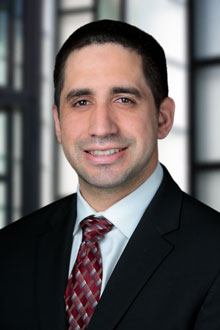In Lopez v. Ledesma (Mar. 24, 2020, B284452) __Cal.App.5th ___, the Court of Appeal, Second Appellate District, Division Two (Los Angeles) decided whether professional negligence claims against physician assistants were subject to the same noneconomic damage limitation as professional negligence claims against doctors pursuant to the Medical Injury Compensation Reform Act (“MICRA”). After ruling in favor of the plaintiff on whether the defendant physician assistants were professionally negligent for the wrongful death of the plaintiff’s daughter, the trial court reduced the noneconomic damages owed by the defendants from $4.25 million to $250,000 in compliance with MICRA. (Slip Opn., p. 2.) The appellate court affirmed. (Id. at p. 27.) A copy of the opinion is attached.
Plaintiff’s daughter was treated for a skin growth on her scalp by defendant physician assistants. (Slip Opn., pp. 6-7.) The physician assistants repeatedly misdiagnosed the skin growth as nonmalignant warts. (Ibid.) Eventually, the skin growth was correctly diagnosed as malignant melanoma. (Id. at p. 7.) The correct diagnosis came too late to save the plaintiff’s daughter, who passed away at the age of four. (Ibid.) The physician assistants who were responsible for the misdiagnosis had delegation of services agreements (“DSA”) with supervising doctors, but the doctors did not adequately monitor their work. (Id. at pp. 8-10.) Plaintiff filed a wrongful death action against the physician assistants and their supervising doctors. (Id. at p. 2.) Plaintiff prevailed in her claims, but the trial court, citing Civil Code section 3333.2, subdivision (b), reduced her noneconomic damages from $4.25 million to $250,000. Plaintiff appealed. (Ibid.)
The sole issue on appeal was whether “the limitation on the amount of damages for noneconomic losses in medical malpractice actions under section 3333.2 applie[d] to an action against a physician assistant who [was] only nominally supervised by a doctor.” (Slip. Opn., p. 11.) Plaintiff argued the damages against defendant physician assistants were not subject to the limitation in section 3333.2 because they were not operating within the scope of services for which the healthcare provider was licensed in accordance with section 3333.2, subdivision (c)(2). (Id. at pp. 2-3.) The supervising doctors’ lack of adequate supervision of the physician assistants moved the physician assistants’ actions outside the scope of services for which the physician assistants were licensed to provide. (Ibid.) The appellate court disagreed. (Id. at p. 3.) A physician assistant is not permitted to practice medicine without a doctor’s supervision. (Id. at p. 18.) The court acknowledged a physician assistant practicing medicine without a relationship with a doctor would be operating outside the scope of services for which a healthcare provider was licensed as defined in section 3333.2, subdivision (c)(2). (Id. at p. 19.) However, the physician assistants in this case both had legal relationships with supervising doctors, as shown by the DSAs between the physician assistants and the doctors. (Ibid.) “If an otherwise qualified [doctor] assumes the legal responsibility of supervising a physician assistant, that physician assistant practices within the ‘scope of services’ covered by the supervising [doctor’s] license, even if the supervising [doctor] violates his or her obligation to provide adequate supervision.” (Id. at p. 20.)
The appellate court opted to create a bright-line rule for applying the damages limitation to physician assistants as well as their supervising doctors for five primary reasons. (Slip Opn., pp. 20-26.) First, the physician, rather than the physician assistant, “is the relevant ‘health care provider’ for purposes of determining whether particular services are within the scope of a license under Civil Code section 3333.2.” (Slip Opn., p. 20.) Second, an adequacy of supervision standard would make the section 3333.2 damages limitation dependent on whether “a supervising [doctor] acts contrary to professional standards.” (Id. at pp. 21-22.) It is considered unprofessional conduct for a doctor to not supervise his physician assistants. (Id. at p. 22.) The Supreme Court has already held unprofessional conduct does not automatically mean conduct is outside the scope of a healthcare provider license. (Ibid.) Third, a sufficiency of supervision standard is too difficult for the court to define. (Id. at p. 23.) Fourth, a standard based on competent supervision would create inconsistent rulings on damages depending on whether the plaintiff sued the doctor or the physician assistant. (Id. at pp. 24-25.) Finally, a bright-line rule on the supervision of physician assistants serves the purposes of MICRA. (Id. at p. 26.) A supervising doctor’s risk of damages and raised insurance premiums should not be increased by negligent oversight of that doctor’s assistants. (Ibid.) The appellate court concluded by noting the Legislature was free to establish a different rule if it disagreed with the court’s decision. (Id. at p. 27.)
